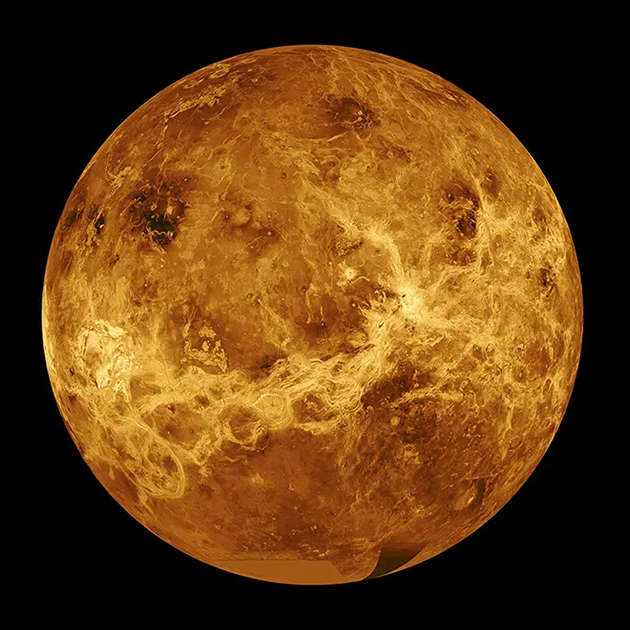Venus is the second planet of the solar system. Making it one of the hottest planets, and therefore inhabitable.

Table of Contents
Remarkable data about Venus:
| Radius | 6,051.8 km |
| Mass | 4.867 × 10^24 kg |
| Gravity | 8.87 m/s² |
| Distance from Sun | 108.2 million km |
| Age | 4.503 billion years |
| Orbital period | 224.7 days |
| Natural satellites | None |
Key Features of Venus:
- Terrestrial Planet: Venus is a rocky planet similar in size, structure, and composition to Earth, often referred to as Earth’s “twin.”
- Thick Carbon Dioxide Atmosphere: Venus has a very dense atmosphere composed mainly of carbon dioxide (96.5%), with traces of nitrogen (3.5%) and small amounts of sulfur dioxide and other gases.
- High Surface Pressure: The atmospheric pressure on Venus is about 92 times that of Earth, equivalent to the pressure found 900 meters (3,000 feet) underwater on Earth.
- Greenhouse Effect: The thick atmosphere creates a runaway greenhouse effect, trapping heat and making Venus the hottest planet in the Solar System, with surface temperatures averaging about 475°C (900°F), hotter than Mercury, even though Venus is further from the Sun.
- Volcanic Landscape: Venus’ surface is dominated by vast volcanic plains, large shield volcanoes, and lava flows. Some volcanoes may still be active.
Venus Position in the Solar System:
- Orbit: it orbits the Sun at an average distance of about 67 million miles (108 million kilometers), compared to the 149.6 million km that the Earth has to the Sun, it is a huge difference.
- Rotation and Tilt: unlike most planets, it rotates backwards, and it has the slowest rotation of any planet, taking 243 days to complete one rotation over its axis. The planet is tilted at about 2.64 degrees, which means it does not experience significant season variations.
